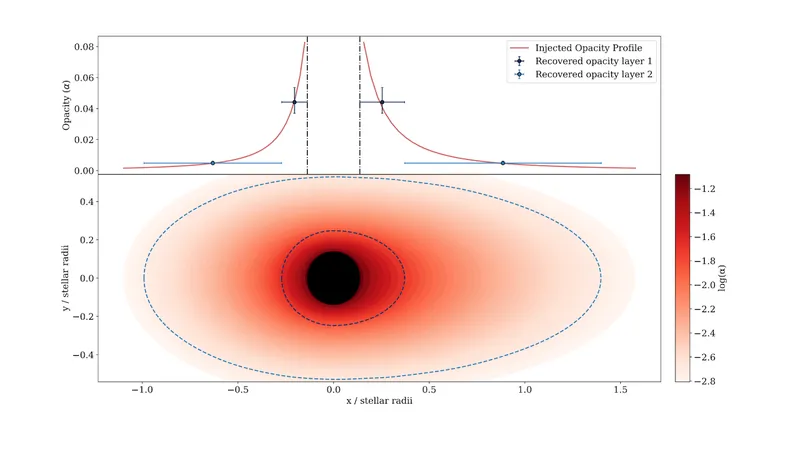
Amazing Discoveries: How a Helium Tail is Unraveling the Secrets of Exoplanet HAT-P-18b!
2025-08-24
Author: Amelia
Exoplanet Atmospheres and Atmospheric Escape
Exoplanets located close to their host stars are under constant bombardment by intense X-ray and ultraviolet radiation. This exposure can lead to a dramatic phenomenon—strong atmospheric escape. These escaping gases create elongated tails that trail behind the planets, impacting their visibility during transit.
The Impact of Gas Tails on Transit Light Curves
When these exoplanets transit in front of their star, the escaping gas tails can cause larger-than-life depths in the transit light curves. Interestingly, this phenomenon introduces significant differences between the light received during the ingress (when the planet moves in front) and the egress (when it moves away) phases, creating an intriguing puzzle for astrophysicists.
Innovative Modeling with Harmonica
Using a cutting-edge software called Harmonica, researchers have developed a new method to effectively model the light curves of these transiting planets enveloped by gas tails. This innovative technique allows scientists to infer not just the shape but also the size of the gas envelope surrounding the exoplanet.
Spotlight on HAT-P-18b: A Helium Treasure Trove
The method was put to the test with the James Webb Space Telescope’s observations of HAT-P-18b, which exhibited striking helium tail features in its spectroscopic light curve. The findings revealed that HAT-P-18b boasts a trailing helium tail measuring an impressive 15.79+1.14−1.05 planetary radii!
Validation and Future Insights
To ensure accuracy, the researchers conducted injection-recovery tests that validated the robustness of their modeling approach. The potential to fit a multi-layer envelope profile to the data opens exciting avenues for understanding atmospheric structures and variations in opacity.
A Collaborative Effort
This groundbreaking research involved a collaboration of notable scientists, including Carlos Gascón and Mercedes López-Morales, among others, who are paving the way for future explorations in the fields of exoplanetary science and astrobiology.
What Lies Ahead?
As we uncover more about exoplanets like HAT-P-18b, the field of astrobiology stands on the brink of revolutionary discoveries. The ability to model atmospheric escape and gas tails could fundamentally change our understanding of planets across the universe.









 Brasil (PT)
Brasil (PT)
 Canada (EN)
Canada (EN)
 Chile (ES)
Chile (ES)
 Česko (CS)
Česko (CS)
 대한민국 (KO)
대한민국 (KO)
 España (ES)
España (ES)
 France (FR)
France (FR)
 Hong Kong (EN)
Hong Kong (EN)
 Italia (IT)
Italia (IT)
 日本 (JA)
日本 (JA)
 Magyarország (HU)
Magyarország (HU)
 Norge (NO)
Norge (NO)
 Polska (PL)
Polska (PL)
 Schweiz (DE)
Schweiz (DE)
 Singapore (EN)
Singapore (EN)
 Sverige (SV)
Sverige (SV)
 Suomi (FI)
Suomi (FI)
 Türkiye (TR)
Türkiye (TR)
 الإمارات العربية المتحدة (AR)
الإمارات العربية المتحدة (AR)